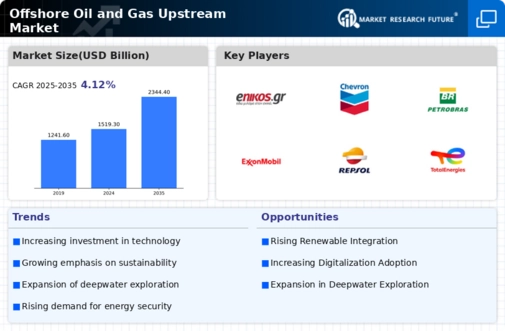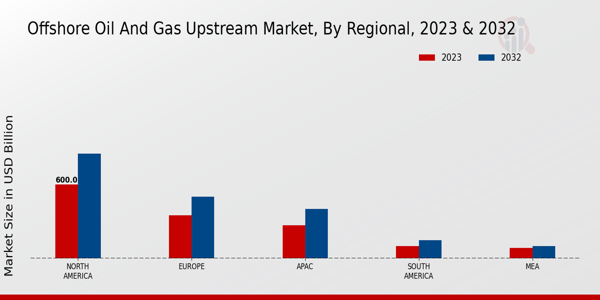The Offshore Oil and Gas Upstream Market is characterized by its dynamic nature and significant shifts driven by geopolitical factors, technological advancements, and sustainability initiatives. Competitive insights in this market highlight the intense rivalry among industry players who are vying for dominance in regions rich in hydrocarbon reserves. Companies in this sector are focusing on various strategies such as mergers and acquisitions, partnerships for exploration, and investments in advanced drilling technologies to enhance operational efficiency and reduce costs.
The increase in demand for energy and the need for transitioning toward cleaner energy sources also play a critical role in shaping competitive dynamics. As market participants navigate regulatory challenges and environmental concerns, their ability to innovate and adapt to changing market conditions will be crucial for maintaining competitiveness.
Eni has a robust presence in the Offshore Oil and Gas Upstream Market, leveraging its significant expertise in exploration and production. The company's strategic approach includes a blend of technological innovation and a commitment to sustainability, positioning it as a key player in offshore operations. Eni has excelled in developing large-scale offshore projects and implementing enhanced oil recovery techniques, which have proven to be effective in maximizing yield from existing fields. Its strong capital investments in exploration allow for an extensive portfolio of offshore assets, enhancing Eni's competitive advantage.
The company also focuses on strategic partnerships that strengthen its market position, allowing for resource sharing and access to new technologies that facilitate efficient operations in challenging environments. Such strengths enable Eni to remain agile and responsive to market flux while contributing to the sector's overall productivity.
Chevron stands out in the Offshore Oil and Gas Upstream Market with a strategic focus on technological innovation and efficient resource management. The company's extensive experience in offshore exploration and production enables it to navigate complex geological formations and maximize output. Chevron's partnerships with local entities and investment in joint ventures have bolstered its global outreach, thereby enhancing its market presence across various offshore regions. Additionally, Chevron emphasizes sustainability and environmental stewardship within its operations, implementing best practices that reduce ecological impacts while maintaining operational excellence.
The company's significant financial resources allow for substantial investments in cutting-edge technology and research, driving advancements in offshore extraction processes. This strategic positioning, combined with its commitment to operational efficiency, ensures Chevron's competitive edge in the evolving landscape of the offshore oil and gas sector.






















Leave a Comment